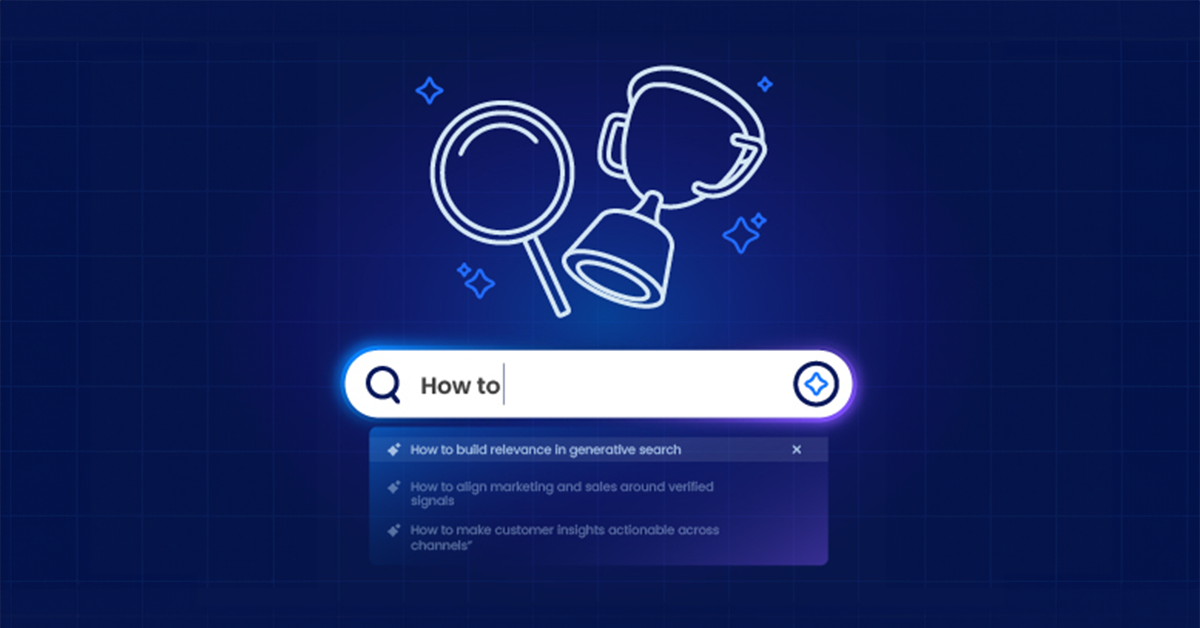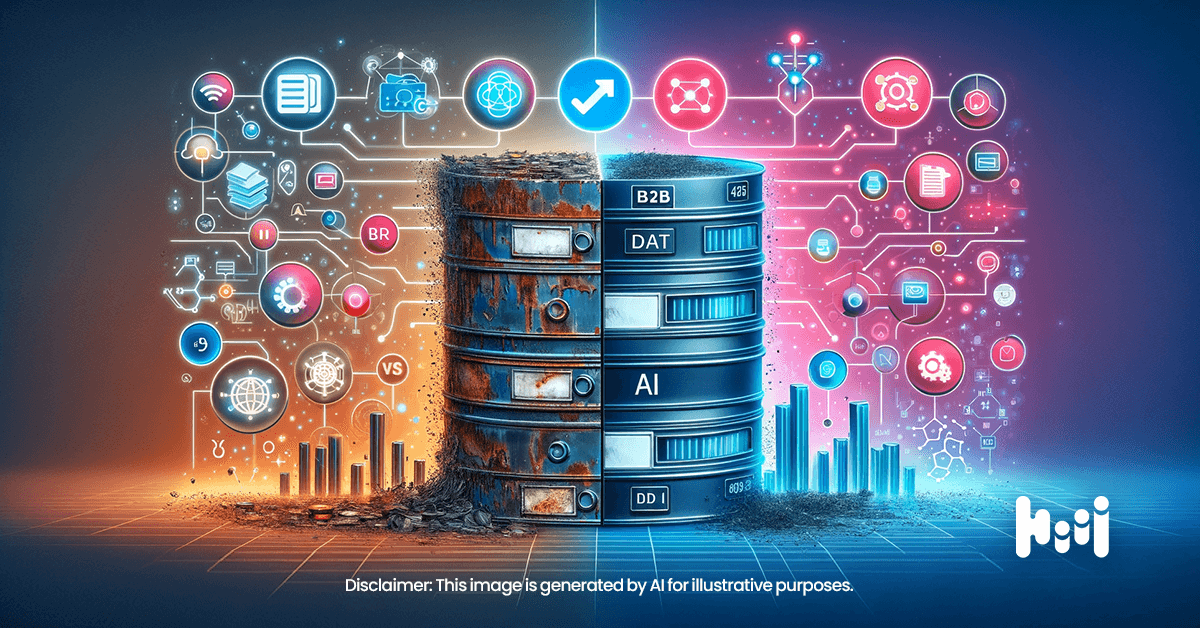
Marketers have spent the past two years debating how to adapt to AI-driven search – from zero-click results to generative summaries. Everyone’s asking the same question: How do we stay visible and protect our brand when buyers are getting their answers from LLMs instead of links?
But the real issue isn’t just the rise of AI. It’s that most optimization strategies have drifted away from data – the connective tissue between content, intent, and discoverability.
Generative engines still reward what search has always valued: credibility, context, and consistency. What’s changed is how those qualities are inferred. When your data is incomplete, inconsistent, or siloed, your authority fragments across every discovery surface – whether it’s Google, Bing Copilot, or ChatGPT.
Optimization in the AI era isn’t about chasing keywords or prompts. It’s about connecting clean data, credible content, and coherent signals so both humans and machines recognize your brand as the expert it is.

The Illusion of New Playbooks
Despite all the noise, most current approaches fall into the same three traps.
- “SEO is dead. Go all-in on GEO.” An attractive headline, but unproven. LLM optimization without a foundational structure is just guesswork.
- “Stick with traditional SEO.” Core hygiene still matters, but search alone can’t keep up with the way generative models interpret and summarize information.
- “Buy visibility.” Paid media fills short-term gaps but doesn’t build the enduring authority AI systems rely on.
The truth: you need them all – connected by data. SEO is the engine, GEO and AIO are the new distribution layers, and data alignment ensures each reinforces the others.
What ‘Good’ Looks Like – For Humans and Machines
- Start with data integrity and signal coherence. Make sure your metadata, schema, and internal linking consistently signal what your brand stands for. Disconnected or contradictory information weakens every downstream touchpoint, from search crawlers to LLMs.
- Focus on resonance built from real behavior. AI doesn’t reward volume; it rewards relevance. Use behavioral and intent data to learn what questions your audience – and the models they influence – actually ask. Build content that answers those questions directly and authoritatively.
- And maintain continuous feedback loops. Optimization is now a living system. Measure performance across both human and machine discovery – rankings, citations, engagement, and visibility in AI summaries – and feed those learnings back into your editorial planning. When data, content, and discovery are aligned, authority compounds instead of decaying. (What Can You Do with Old Blog Content? Guide to Repurpose Old Content)
From Visibility to Verifiability
A new commercial model is emerging. LLMs and copilots are beginning to monetize recommendation slots and preferred-partner listings. Around them, AI marketplaces are taking shape – much like Shopify’s App Store or Salesforce’s AppExchange – where vendors become verified “signal providers” within the assistant’s ecosystem.

The first wave of this is happening in B2C and prosumer markets, where AI assistants are already helping users compare, choose, and even check out directly. But the same dynamics will inevitably reach B2B discovery and buying, where verified data quality and compliance will determine which vendors AI agents recommend.
This represents a philosophical shift: search optimized for finding answers; LLMs optimize for being the answer. For B2B marketers, that means awareness, consideration, and even conversion will increasingly be mediated by AI recommendation layers rather than websites or ads. Whoever informs those layers controls visibility and market access.
8 Practical Steps You Can Take Right Now
Here’s how to make the shift actionable.
- Mine your own conversations. Use AI to analyze Sales and Customer Success calls. Surface the top 10–20 customer questions and create content around them — those are the real prompts shaping generative results.
- Write listicles and explainers. Concise, structured articles (“5 Ways to…” or “Top Questions About…”) are easily indexed, summarized, and cited by both search engines and LLMs.
- Keep your content library clean and current. Audit quarterly. Merge duplicates, update data, and archive irrelevant material. Stale content confuses both readers and algorithms.
- Structure your data for discovery. Implement schema markup for FAQs, authorship, and organization details so AI systems can understand, trust, and attribute your expertise.
- Align analytics with editorial. Make sure the team tracking buyer intent is feeding those insights directly into content planning. Every post should tie to a measurable signal of demand.
- Track behavior and adapt. Identify which assets drive engagement, backlinks, and AI citations. Reinforce what’s working; refine what’s not.
- Monitor LLM visibility. Test your brand and topics monthly in ChatGPT, Gemini, Bing Copilot, and Perplexity. Note what appears, and what’s missing.
- Measure outcomes, not impressions. Connect optimized content to pipeline creation and revenue influence. Visibility only matters if it drives impact.
Don’t Stop at Visibility
Optimizing for AI discovery isn’t just about being found – it’s about remaining part of the transaction. If your content isn’t accessible to LLMs in the right form, you risk disappearing from the next generation of discovery interfaces where buyers ask, not search. And if you ignore the integration layer where AI assistants handle comparison, configuration, and even purchasing, you risk losing value upstream to the platforms that mediate those interactions.
Traditional SEO alone won’t preserve visibility. The new goal is to ensure your brand’s expertise, data, and offers are indexable by LLMs and actionable within AI-mediated buying flows.
DemandScience’s Perspective
At DemandScience, we see this not as a new playbook but as the next evolution of precision marketing.
We believe the next evolution of marketing data will involve closer integration with AI discovery and recommendation layers – where verified, compliant, and machine-readable signals guide which vendors and messages intelligent systems surface.
Our role is to make sure our customers are ready for that shift: supplying the trusted data foundation that allows both humans and machines to recognize when a company is truly in market, what it offers, and why it matters.
Data doesn’t replace SEO. Rather, it enables everything from search visibility to AI discoverability.
Our Demand Accelerator and Buyer Insight Report help you quickly understand how to unify audience data, intent signals, and content insights so marketers can see exactly which topics resonate and why turning every optimization effort into a measurable growth lever.
Every insight, every signal, every connection becomes part of how intelligent systems decide which brands to trust. Because in an AI-driven discovery world, the winners won’t have the most content. They’ll have the clearest, most connected signals and most resonant buyer-specific content – along with the discipline to use them all well.










